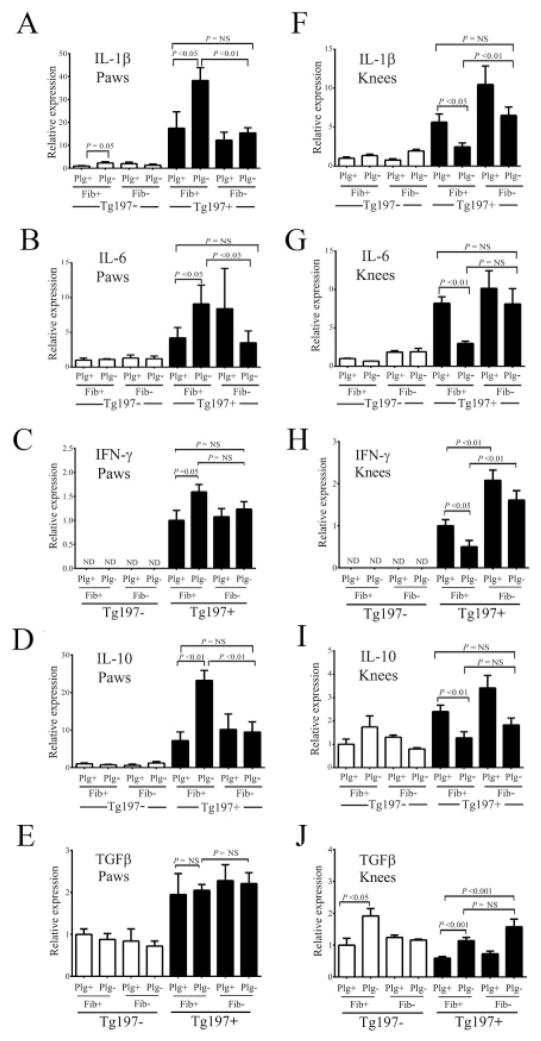Figure 5.
Proinflammatory and antiinflammatory cytokine expression within joints is dependent on both plasminogen and fibrinogen and correlates with arthritis severity in Tg197 mice. Results of quantitative reverse transcriptase–polymerase chain reaction analysis of interleukin-1γ (IL-1γ), IL-6, interferon-β (IFNβ), IL-10, and transforming growth factor β (TGFβ) messenger RNA isolated from the paws (A–E) and knees (F–J) of 10-week-old Tg197+ and Tg197− mice with selected deficits in plasminogen and/or fibrinogen are shown. Cytokine expression was low in the arthritis-free Tg197− mice, regardless of hemostatic factor status. In Tg197+ mice, expression of each of these endogenous inflammatory mediators was readily detected in both the paws and knees. Importantly, plasminogen acted as both a positive and a negative determinant of endogenous cytokine expression in Tg197+ mice, depending on joint location. Note that the pattern of endogenous cytokine expression closely followed the location-dependent and hemostatic factor–dependent worsened or diminished overall arthritis pathology. Bars show the mean ± SEM (n = 4 mice in the Tg197− control group; n = 6–8 mice in all other groups). P values were determined by Student’s t-test. NS = not significant.

